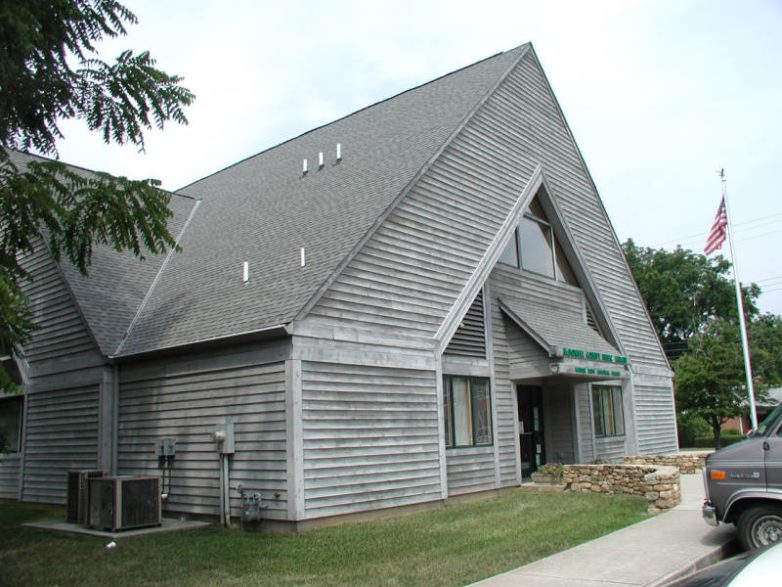RALEIGH
McDowell County has been chosen as the subject of a comprehensive survey of historic buildings and landscapes planned from 2022-24. Funding for this architectural survey comes from the Emergency Supplemental Historic Preservation Fund (ESHPF), administered by the National Park Service, for hurricanes Florence and Michael. Because the Federal Emergency Management Agency (FEMA) declared a major disaster in McDowell County following both storms, the county is an eligible location for planning projects intended to document the degree of damage from past storms as well as provide preparedness for future disasters.
As national emergencies arise, Congress may appropriate funding from the Historic Preservation Fund (HPF) to provide relief for historic preservation projects in areas impacted by natural disasters. The HPF uses revenue from federal oil and gas leases on the Outer Continental Shelf to assist a broad range of preservation projects without expending tax dollars. In 2018, hurricanes Florence and Michael, as well as Typhoon Yutu, caused extensive damage to communities in Alabama, Florida, Georgia, North Carolina, the Northern Mariana Islands, South Carolina, and Virginia. Congress subsequently passed Public Law 116-20 to provide ESHPF assistance to these six states and one territory related to damages from these storms.
North Carolina has chosen to allocate funding to support the survey of historic resources to determine the overall degree of damage, as well as provide data for resiliency planning for our state’s treasured cultural resources. McDowell County was selected from among other eligible counties because the State Historic Preservation Office (HPO) has not previously conducted a comprehensive architectural survey of the county. The 2022-2024 architectural survey will intensively document historic buildings and landscapes from the early 19th century through the 1970s, including those in Marion and Old Fort and rural areas. Data gathered during the survey will assist McDowell County in planning for the preservation of its historic resources.
The State of North Carolina has hired NV5, a Cary, N.C-based cultural resources consulting firm, to complete the project. Kenneth Zogry will serve as Principal Investigator. Preliminary fieldwork will start in December. A survey of rural McDowell County will occur in mid-to-late 2023. A survey of Marion is anticipated to occur in late 2023 or early 2024.
An architectural survey entails documentation of buildings and landscapes that are at least 50 years old. Fieldworkers take photographs, draw site plans, and collect oral history from people they meet on site. They conduct a limited amount of archival research to establish countywide patterns of historical development. NV5 will also identify properties that appear to be potentially eligible for listing in the National Register of Historic Places, either individually or as historic districts. National Register properties are potentially eligible for state and federal tax credits for certified historic rehabilitation. The McDowell County Comprehensive Architectural Survey will culminate in a final report that analyzes the history of the county through the lens of its historic architecture.
At the conclusion of the survey, the HPO will share the final report and geospatial data collected during fieldwork with the National Park Service and will retain all materials from the survey as part of the statewide architectural record. Public access to the information will be available through HPOWEB, the HPO’s geographic information system, which is accessible online at http://gis.ncdcr.gov/hpoweb/. The survey material will facilitate the environmental review necessary for state and federal undertakings and will aid in planning for future economic and community development projects. Survey products also will be useful for the continued development of heritage tourism programs in McDowell County.
For more information on the McDowell County Comprehensive Architectural Survey, contact Elizabeth C. King, Architectural Survey Coordinator for the North Carolina State Historic Preservation Office, at elizabeth.king@ncdcr.gov or 828-250-3108, or Kenneth Zogry PhD, Senior Historian for NV5, at kenneth.zogry@nv5.com.
About the State Historic Preservation Office
In North Carolina, the State Historic Preservation Office (HPO) is an agency of the N.C. Department of Natural and Cultural Resources. The HPO carries out state and federal preservation programs that assist private citizens, non-profit institutions, local governments, and agencies of state and federal government in the identification, evaluation, protection, and enhancement of properties significant in North Carolina’s history and archaeology.
The HPO oversees the statewide architectural survey; administers the National Register of Historic Places for North Carolina properties; conducts environmental review of state and federal actions affecting historic and archaeological properties; provides technical assistance to owners in the restoration of historic properties, including those owners seeking state and federal rehabilitation income tax credits; provides grant assistance for historic preservation projects; provides technical assistance to local preservation commissions; and provides historic preservation education, including publication of preservation plan updates and the HPO newsletter, Worth Saving (http://www.hpo.ncdcr.gov/newsletter/newsletter.htm).
About the North Carolina Department of Natural and Cultural Resources
The N.C. Department of Natural and Cultural Resources (NCDNCR) is the state agency with a vision to be the leader in using the state’s natural and cultural resources to build the social, cultural, educational and economic future of North Carolina. NCDNCR’s mission is to improve the quality of life in our state by creating opportunities to experience excellence in the arts, history, libraries and nature in North Carolina by stimulating learning, inspiring creativity, preserving the state’s history, conserving the state’s natural heritage, encouraging recreation and cultural tourism, and promoting economic development.
NCDNCR includes 27 historic sites, seven history museums, two art museums, three science museums, three aquariums and Jennette’s Pier, 41 state parks and recreation areas, the N.C. Zoo, the N.C. Symphony Orchestra, the State Library, the State Archives, the N.C. Arts Council, the African American Heritage Commission, State Preservation Office and the Office of State Archaeology, and the Division of Land and Water Stewardship. For more information, please visit www.ncdcr.gov.



